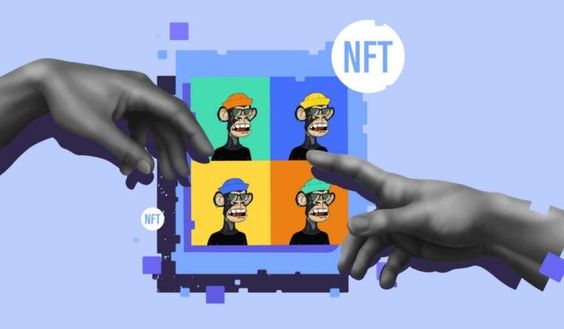Nonfungible tokens have arisen as a game-changing mechanism for artists, particularly photographers, to promote and sell their work in the fast-growing platform of the digital art world. NFTs provide a novel method of proving ownership and validity of digital works, but they are not without their own set of issues and considerations.
Protecting your artistic works is critical for photographers moving into the NFT market.
In this article, we will discuss important strategies for photographers to secure their work in NFT markets while exploring the best NFT marketplace for photographers and guaranteeing their artistic heritage is preserved.
Methods to Protect NFTs
1. Know Your NFTs Inside Out: Knowledge is Power
Take time to learn about NFTs before going on your NFT adventure. Understand the technology, the NFT minting process, and how ownership and provenance are formed on the blockchain. Your first line of protection against possible dangers is knowledge.
2. Strategic Watermarking: Balancing Exposure and Protection
Watermarking your photographs can prohibit unlawful usage while indicating ownership. However, balance is essential. A certain watermark may safeguard your work while enabling people to enjoy its score. Watermarks that are too prominent will distract the aesthetic impact of your artwork.
3. Make Use of Metadata: Include Copyright Information
Copyright and contact information should be included in your image metadata. This creates a digital fingerprint that may be traced back to you as the author. It is an additional layer of protection that can help you exercise your rights.
4. Value Quality Over Quantity
When choosing photos to mint as NFT, prioritize quality above number. To keep your NFT portfolio exclusive and valuable, highlight your greatest work. A limited number of high-quality works might help you develop your name and attract serious collectors.
5. Adopt Tokenized Licensing: Define Terms Clearly
You may describe how your NFTs can be utilized using tokenized licensing. You may choose terms for personal and commercial usage, as well as set royalties for secondary sales. Define these phrases clearly to ensure that customers understand your purpose.
6. Produce Limited Editions: Scarcity Adds Value
Using limited editions may instill a feeling of uniqueness and urgency among creators. You improve the popularity and potential worth of artwork by limiting the quantity of NFTs available for it.
7. Involve the Community: Establish Trust and Recognition
Active participation in the NFT community might help you develop your artist credibility. Participate in debates, display your creative process, and articulate your ideas. Building connections and gaining trust can result in long-term protection of your work.
8. Register Your Copyright: Legal Protection
While NFTS establishes a digital record of ownership, registering your copyright with appropriate authorities adds an extra degree of legal protection. Registered copyright enhances your claim to your work in the event of a dispute.
9. Maintain Plagiarism Vigilance: Monitor and Report
Monitor NFT markets and Internet platforms regularly for unlawful usage or plagiarism of your work. If you come across infringing content, please notify the platform admins as soon as possible.
10. Select Reputable Marketplaces: Due Diligence is Important
Choose empty markets with a good reputation for security, transparency, and customer service. To guarantee that your rights are protected, look into the marketplace terms of service, copyright policy, and dispute resolution methods.
11. Backup Your Work: Prevent Data Loss
Back up your original photograph securely, ideally on different storage devices or the cloud. Protecting against data loss guarantees that you have the means to reclaim ownership if necessary.
12. Educate Your Collectors: Promote Work Respect
Educate your collectors about the worth of your art and the need to protect your rights. By building a respectful culture, you create a community that values and protects your creative efforts.
13. Succession Planning: Preserving Your Legacy
Consider how you want to manage your NFT portfolio in the long run. Plan for the future by laying down how your job will be handled once you are gone. Making a smooth transition protects the integrity of your artistic heritage.
Conclusion
Finally, the world of NFTs provides a tremendous opportunity for photographers to promote and sell their work. You may confidently navigate the NFT economy by equipping yourself with information, Employing technology, and applying strategic tactics.
Protecting your photography masterpieces is about more than just ensuring your rights. It’s also about preserving your creative legacy for future generations.
Accept these suggestions, tailor them to your path, and go off on your NFT voyage with a solid commitment to protecting your craft.
Frequently Asked Questions
How Can I Prevent Illegal Copying or Replication of My NFTs?
Consider strategically watermarking your photographs, including copyright information in metadata, and registering your copyright with relevant authorities to safeguard your NFTs from unlawful duplication. These measures assist in establishing your ownership and discouraging possible infringers.
Can I Make My NFT Copyright Protected?
Yes, you may protect your NFT by copyright. Copyright law applies to digital work in the same way that it does to physical works. If someone uses your NFT without your consent, you have the legal right to sue.
What Measures Can I Take to Improve the Security of My NFTs?
Aside from watermarking and copyright registration, blockchain technology may be used to improve security. Choose a credible NFT market that mints and exchanges NFTs on secure blockchain networks.
What Should I Do if I Notice Someone Is Using My NFTs Without Any Authorization?
If you discover that someone is utilizing your NFT without your permission, collect evidence of the infringement, such as screenshots or URLs. Contact the platform that is hosting unlicensed content and ask that it be removed. You can obtain legal assistance if required to enforce your rights.
Is It Possible to Track the Internet Usage of My NFT?
While there is no reliable way to track every instant of your NFT being used, you may run a reverse image. Search regularly or employ specialist services to monitor the Internet for potential unlawful usage of your photos.







Leave a Reply